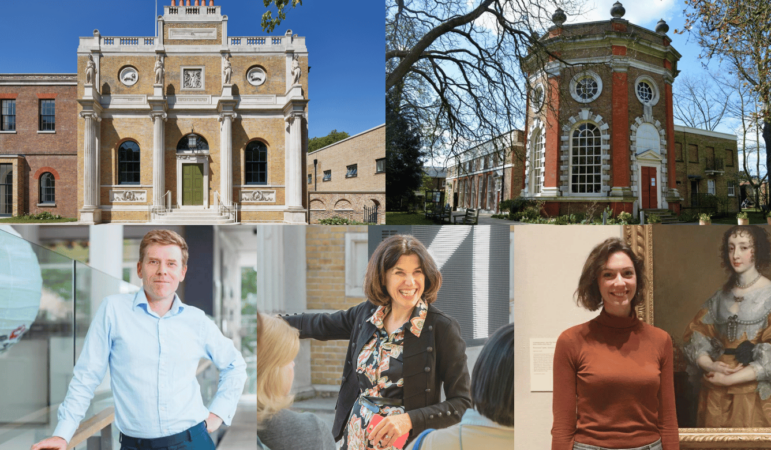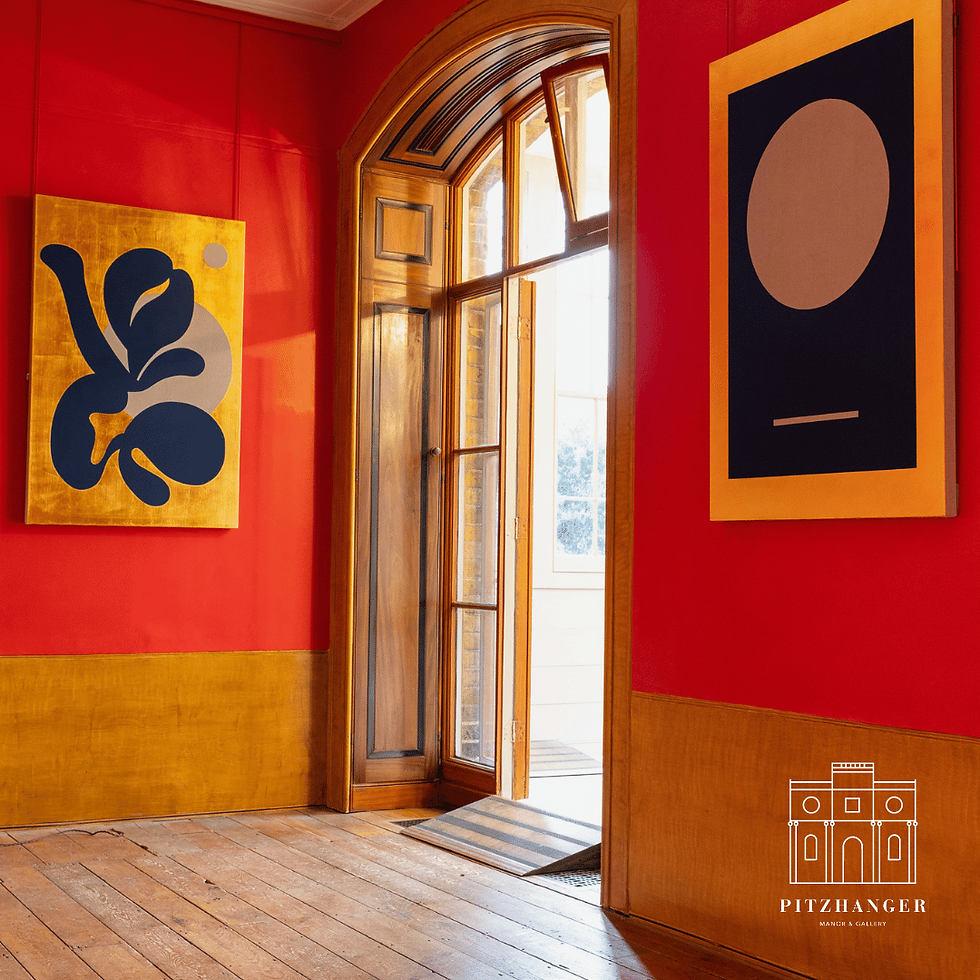ISM: Reconsidering the Meaning of Curatorial...ism
- Yuna Kim
- May 2, 2024
- 4 min read

Speakers from left to right: Tim Corum, Richmond Arts Service; Clare Gough, Director of Pitzhanger Manor & Gallery; Dr. Emily Burns, Curator for English Heritage.
Source: Pitzhanger Manor & Gallery Website
This one may be a bit of a cheat in terms of making the title work, but I hope the reader takes it with a pinch of salt considering that for many art historians and cultural enthusiasts, it is no new idea that curatorial...ism and a "collection" go hand in hand.
Today, I attended a talk at the Pitzhanger Manor in Ealing titled, "The Art of Collecting in 18th Century London’s Grand Houses: Pitzhanger Manor, Orleans House, and More." Hosted by Dr. Judith Hawley, Professor of Eighteenth-Century Literature at Royal Holloway, University of London, the talk showcased a panel of three key speakers representing different historic houses of English Heritage and the houses' respective roles, and influences towards, the practise and idea of a "collection."
Attendance of this talk culminated in an intense personal review of the beliefs I had found myself adhering to, particularly in settings of historic houses and other similarly protected cultural structures. For example, it had always been difficult to consider contemporary exhibitions (modern to postmodern works) within historic houses (definitely pre-modern/postmodern) with a broad mind, especially if the works did not visually complement the space in my opinion. In short, my idea of a "collection" had always adhered to a consistent timeline, and to a visually coherent method. While this may be a widely spread and normal (yet recently noticeably challenged) notion, listening to the speakers made me realise that I had failed to consider how such temporary or semi-permanent changes to a collection may benefit the space instead of simply "making a statement" or being superficially explorative, as I had thought. When the Director of Pitzhanger Manor & Gallery pointed out that the founder (as in architect) of Pitzhanger Manor himself, Sir John Soane, had used anachronous display as not just an aesthetic choice but a tool for selfless artistic education, she concluded how we today might recreate such intentions of education and cultural conversation today by using old spaces for new works. To elaborate, Sir John Soane had apparently invited apprentices to examine his collections (both works inside the house and the house itself) since the French Revolution prevented many of them from taking part in the Grand Tour themselves. Although they would not be able to see the works in Italy as he had, they were given a chance to see a small amount of personally acquired Classical works as well as be immersed in a space designed and constructed by an individual who had had the benefit of the artistic rite of passage. In short, the collection worked as a teaching space, not just a display of personal taste or canonical theory. I was a bit embarrassed, remembering moments of distaste for anachronous display simply due to personal opinions of visual incongruity, when those very displays had once been, and may continue to be, what make a collection truly a "collection," as in a group of objects that are meant to be culturally significant and not just pretty or comfortable to the eyes.
Similarly, Dr. Emily Burns and Tim Corum's segments also continued to challenge my notions of the role of collections and curation: not just to preserve, but to represent. Basically, collections should not just glorify a founding father or mother but continue to forge a narrative that keeps that group of objects relevant to its community. This is not just emotional but logical: a community has to be interested in a collection to protect it, since attendance and awareness are what will keep the collection open. Public collections suffer from many challenges including lack of funding and protection, legal difficulties, and preservation of collections from previous losses such as the Marble Hill House's loss of numerous portraits due to previous owners selling off large parts of the collection before legal acts kicked in (Dr. Burns). I realised that collections' collaborations with and commissions of artists today are not just emotional narratives of connecting collection to community, but a curatorial decision that furthers the collection's place in history by preserving it.
However, I do want to present a final thought in the role of contemporary intermixing with historical collections: is there a visual limitation to it? What I mean by that is, are curators and audiences only willing to tolerate it to a certain level, as in a level of visual comfortability? For example, the Pitzhanger Manor (recently restored to its original designs) has a room with red walls that Sir John Soane had so proudly designed to complement Hogarth's paintings with their slightly rosy and otherwise complementary tinges and hues. Those red walls today complement paintings by artist Sinta Tantra, similarly with their rosy, red, orange-ish hues.

Source: Pitzhanger Manor & Gallery Website, Sinta Tantra: Illuminating Soane’s Manor
Although it's nothing new to curate exhibitions so that specific paintings/objects/works complement the design of the space, it becomes a speculative notion when it comes to today's discussions of challenging the canonical, and limitations of those challenges. As we have oft seen, some challenges go too far simply for the sake of challenge, while others do too little out of fear of various consequences. As a result, I have personally found myself overwhelmed when it comes to any contemporary exhibition in a historic space, trying to battle with the two opposing spheres of personal opinion and public influence. With all that said, I'd like to remind the reader that like what goes through the heads of viewers at such collections and anachronous displays, this is a personal opinion-- and challenges are always welcome as they are not a challenge but a discussion. And once those discussions are underway, I would say that is when a "collection" in its true form and idea has truly succeeded.
Comments